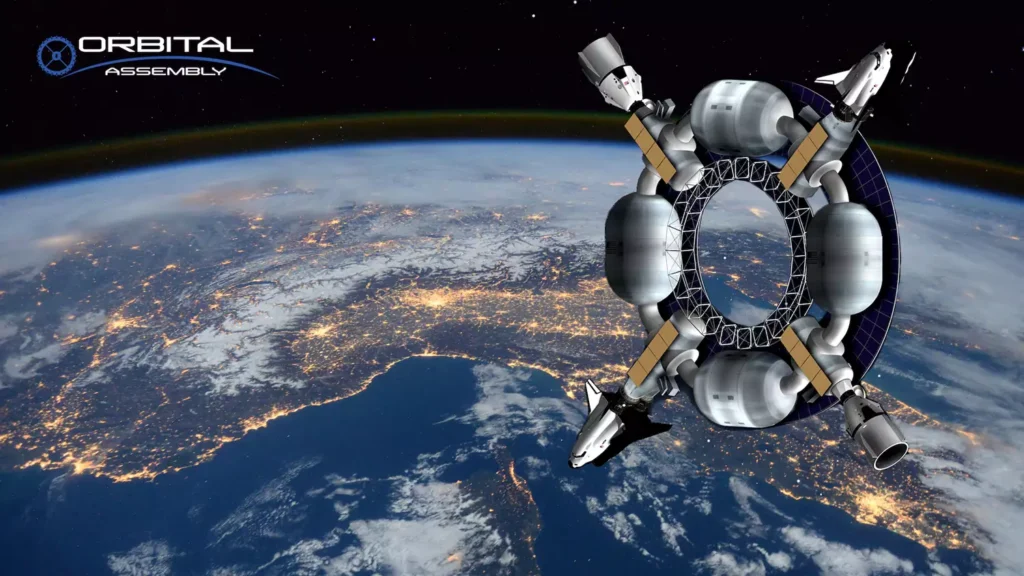“Our vision is to make space a destination people will yearn to visit,” Orbital Assembly Corp.’s Tim Alatorre says
:max_bytes(150000):strip_icc():focal(728x506:730x508):format(webp)/space-hotel-tout-1e3b736f58964a968bc510fe87afc082.jpg)
Vacationing in space could become a reality in just three years.
On Tuesday, Orbital Assembly Corp. announced plans for two space stations with tourist accommodations. Pioneer Station, which can host 28 people, is set to be operational by 2025, while the larger Voyager Station, which was originally announced in 2021 with a capacity of 400 people, is scheduled to open in 2027.
“For the average person, being in space will be a sci-fi dream experience,” says Tim Alatorre, Chief Operating Officer for Orbital Assembly Corp (OAC), said in a press release.
“Our vision is to make space a destination people will yearn to visit, with familiar elements provided by the presence of gravity,” he added.
OAC is creating the world’s first hybrid space stations for both work and play.
They will feature artificial gravity which will allow guests to move around as they normally would, rather than in a weightless environment. The technology is not currently available on space stations, according to the release.
:max_bytes(150000):strip_icc():focal(799x0:801x2):format(webp)/space-hotel-1-58a7942270dc4095a5707d9cd801a383.jpg)
:max_bytes(150000):strip_icc():focal(999x0:1001x2):format(webp)/space-hotel-2-39bd0390fe9d4f05bc2fac03af1235b7.jpg)
Despite the ongoing conversation about the ethics of space travel, as private companies like billionaire Virgin founder Richard Branson’s Virgin Galactic and Jeff Bezos’ Blue Origin both offer commercial space travel, and civilians — including celebrities like Michael Strahan and William Shatner — launch past the Kármán line, Alatorre says, “We envision our Pioneer and Voyager space stations as the ultimate ecotourism destinations.”
“Once people get to space, it will change their perspective about Earth,” he continued. “Space travel is still in its infancy, and we’re excited to do our part to push it forward to help improve life on earth.”
:max_bytes(150000):strip_icc():focal(749x0:751x2):format(webp)/space-hotel-3-3d5126513b224e598f2d74d31b0f4305.jpg)
The customizable environments will feature five “spacious modules” built around OAC’s rotating “Gravity Ring” architecture.
“We’ve been able to develop a safe, secure, and reliable modular station that will generate revenue and profitability from both the tourist and commercial sectors sooner than our competitors who are adhering to NASA timetables,” Rhonda Stevenson, chief executive officer of OAC, said in the press release.
:max_bytes(150000):strip_icc():focal(1064x328:1066x330):format(webp)/space-hotel-4-b22ea7f79a234d848d2cc95ce5c029c7.jpg)
She added, “Multiple revenue streams from commercial, research and tourism markets will enable us to subsidize the travel market for a one to two-week stay. While launch costs continue to be a barrier, we expect tourists will be motivated to plan shorter, or more frequent, stays as space travel becomes less expensive.”
OAC has not yet released information regarding reserving a stay on Pioneer or Voyager.


